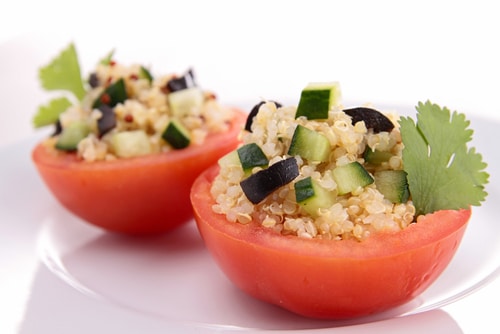 Although it is experiencing a growth in popularity among health aficionados, quinoa is still relatively unfamiliar to many people. But this nutrient-rich grain is anything but new. In fact, archaeological evidence suggests that the consumption of quinoa by South American natives dates back many thousands of years. Ancient South American civilizations so highly revered this staple crop that they referred to it as the “mother of all grains.”
Although it is experiencing a growth in popularity among health aficionados, quinoa is still relatively unfamiliar to many people. But this nutrient-rich grain is anything but new. In fact, archaeological evidence suggests that the consumption of quinoa by South American natives dates back many thousands of years. Ancient South American civilizations so highly revered this staple crop that they referred to it as the “mother of all grains.”
The Origins of Quinoa
There is no doubt that quinoa originated in the mountainous regions of South America. The grain was first cultivated about 5000 years ago in populations residing in the countries of Argentina, Bolivia, Chile, Ecuador, and Peru. These ancient cultures prized quinoa not only for its nutritional value but for its hardiness in the extreme environments of the Andes Mountains. Despite the high altitudes, arid environment, sandy soil, and freezing temperatures, the quinoa plant thrived. The principal crops of quinoa and maize sustained these ancient populations of people for hundreds of generations until the arrival of the Conquistadores in the 16th century.
The End of the Quinoa Age
As Spanish colonization took place in the area, local customs and traditions were slowly erased. Since quinoa was so highly revered by the natives who often used the plants in religious ceremonies, the Spaniards came to detest the plant. They considered it a threat to their own religious faith. The foreign settlers insisted on planting barley, potatoes, and corn – crops which did not tolerate extreme conditions well. The consequence was widespread famine and starvation. Out of desperation, many natives went against the foreign regime and grew quinoa illicitly in higher elevations.
Quinoa Revival
In the 1970s, a Bolivian spiritual leader named Oscar Ichazo revived mass cultivation of quinoa because he thought that the grain helped his followers reach higher spiritual planes. From this movement, the Quinoa Corporation was eventually founded. The company’s mission was to restore quinoa as a primary food source across the globe.
Worldwide, the popularity of quinoa has slowly grown since the 1970s as a nutritive staple. It can be used in place of rice, oats, or other grains. Preparation of quinoa is much the same as rice. Boiling one part quinoa seeds together with two parts water results in a tender, nutty-flavored grain that can be combined with vegetables, used as a side dish or salad topping, or it can even be a base in desserts.
Although quinoa is grain-like, it does not belong to the same plant family as wheat, oats, barley, or rye. As such, it is a gluten-free food and does not usually cause allergic reactions. Quinoa is also a great source of fiber, protein, vitamin E, folate, and manganese.
Related Articles By Cathe:
5 Types of Ancient Grains That Are Worthy Additions to Your Diet
Grain Confusion: Are Whole Grains Healthy?

